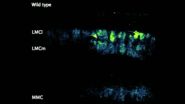(Press-News.org) New research indicates that household food insecurity dramatically increases the likelihood of metabolic diseases in children, with many showing chronic disease markers before they graduate from high school. The study published today in the Journal of the American Osteopathic Association.
Food insecurity, defined as lacking access to food for an active, healthy life, is a preventable health threat. Yet, lack of basic access to food affects 14.3 percent of all U.S.
households and 19.5 percent of households with children.
"This is a looming health issue for the nation. The number of households with severely low levels of food security among children almost doubled between 2003 to 2010," said lead researcher David Holben, PhD, professor and department chair of nutrition and hospitality management at the University of Mississippi.
To study the potential effects of food insecurity, Dr. Holben and colleagues from the University of Mississippi and Ohio State University administered the National Health and Nutritional Examination Survey to a cross-sectional sample of adolescents ages 12 to 18. More than 7,500 participants were interviewed in their homes and given physical examinations between 1999 and 2006.
The data revealed that participants from households with marginally low, low and very low food security were 33 to 44 percent more likely than their high food secure counterparts to be overweight.
Children with very low to marginal food security were also 1.5 times more likely to meet the criteria for central obesity, defined as having excessive fat around the stomach and abdomen. Central obesity is linked to heart disease and metabolic disorders such as diabetes.
"These families often have to make the difficult decision of choosing to buy healthy food or buying food they can afford," said co-author Christopher Taylor, PhD, associate professor of medical dietetics and family medicine at Ohio State University. "Physicians can help their patients identify resources such as local food banks or the Federal Supplemental Nutrition Assistance Program to help bridge that gap."
Dr. Ulrick Vieux, DO, MS, an American Osteopathic Association health policy fellow and psychiatry residency program director at Orange Regional Medical Center in Middletown, N.Y., explains that improving access to adequate, nutrient-based food starts at school, where children can potentially have access to all three meals which they might not have at home.
"Many children rely on school meals to provide healthier meals that they may not be exposed to at home or the community." said Dr. Vieux. "Policies such as the Healthy Hunger-Free Kids Act of 2010 set nutrition standards and increase access to such meals. It's important that we advocate for policies like this to ensure our nation's children are getting the nutrition they need to minimize future obesity-related complications."
INFORMATION:
The study is accessible online until October 31, 2015: http://jaoa.org/article.aspx?articleid=2432876.
About The Journal of the American Osteopathic Association
The Journal of the American Osteopathic Association (JAOA) is the official scientific publication of the American Osteopathic Association. Edited by Robert Orenstein, DO, it is the premier scholarly peer-reviewed publication of the osteopathic medical profession. The JAOA's mission is to advance medicine through the publication of peer-reviewed osteopathic research.
Brooklyn, NY - Xian-Cheng Jiang, PhD, professor of cell biology at SUNY Downstate Medical Center, has led a study identifying a new approach for lowering "bad" lipids in blood circulation, a critical means to combat devastating cardiovascular diseases such as atherosclerosis. The research was published in the online edition of Gastroenterology.
The team established that an enzyme called LPCAT3 (Lysophosphatidylcholine acyltransferase 3) is involved in the biosynthesis of phosphatidylcholine (PC), a type of compound lipid that is a major component of cell membranes. ...
Northridge, CA (September 2, 2015) - A study published Monday in the Journal of Health Care for the Poor and Underserved (JHCPU) concludes that ethnicity is associated with nutrient shortfalls of important nutrients. This study compared usual intake for essential nutrients between Non-Hispanic Black and Non-Hispanic White Americans using data from the National Health and Nutrition Examination Survey (NHANES), 2007-2010. This new analysis is consistent with previous research and confirms a continuing diet-related health disparity in the American population.
Nutrient shortfalls ...
LA JOLLA, Calif., September 2, 2015 - A new Sanford Burnham Prebys Medical Discovery Institute (SBP) study takes a step forward in understanding how similar, yet genetically unrelated neurodegenerative diseases, such as Alzheimer's disease, frontal temporal dementia, and progressive supranuclear palsy (PSP) are caused by the protein tau. The findings, published today in Neuron, create new opportunities to target this key protein that leads to the brain lesions found in patients with impaired motor functions and dementia.
"Our research shows how the abundance of a protein ...
Intentional burning in tropical forests has accounted for nearly 20% of all greenhouse-gas emissions since preindustrial times and will have major implications for Earth's climate and biodiversity in years to come. To better understand the complex dynamics surrounding these fires, a team of researchers led by Jennifer K. Balch, of the University of Colorado-Boulder, conducted a six-year controlled burn experiment in an Amazonian rainforest block located in Mato Grasso, Brazil. The results are described in an article that is part of BioScience's just-released Special Section ...
LA JOLLA--When you're taking a walk around the block, your body is mostly on autopilot--you don't have to consciously think about alternating which leg you step with or which muscles it takes to lift a foot and put it back down. That's thanks to a set of cells in your spinal cord that help translate messages between your brain and your motor neurons, which control muscles.
Now, for the first time, researchers have created a method to watch--in real time--the activity of those motor neurons. The new technology, developed by Salk scientists and published in Neuron, is ...
Georgia Institute of Technology researchers have developed a new artificially intelligent system that crowdsources plots for interactive stories, which are popular in video games and let players choose different branching story options.
With potentially limitless crowdsourced plot points, the system could allow for more creative stories and an easier method for interactive narrative generation. Current AI models for games have a limited number of scenarios, no matter what a player chooses. They depend on a dataset already programmed into a model by experts.
Using ...
Tropical Storm Fred is losing its punch. Satellite imagery shows that there are no strong thunderstorms developing in the tropical storm indicating that the storm is weakening.
The RapidScat instrument that flies aboard the International Space Station measured Tropical Storm Fred's winds on September 1 at 4 a.m. EDT. RapidScat saw that the strongest winds tightly circled the center and were on the northern side of the storm, as strong as 24 and 27 meters per second (53.6 mph/ 86.4 kph and 60.4/97.2 kph).
On September 1 at 13:00 UTC (9 a.m. EDT) the MODIS instrument ...
GeoSpace
High water tables can be a boon to crop yields
A high water table - usually a bane to crop yields - can provide much-needed water during drought and to crops planted in coarse-grained soils, found a new study published online in Water Resources Research.
3-D maps illustrate formation of the Hangai Dome in central Mongolia
Scientists used 1.7 million seismic wave measurements from 227 earthquakes across East Asia to create animated 3-D images of subsurface rock formations under the Hangai Dome in central Mongolia as part of their recent study accepted in Geophysical ...
A new study by WCS (Wildlife Conservation Society) has found that coral reef diversity 'hotspots' in the southwestern Indian Ocean rely more on the biomass of fish than where they are located, a conclusion that has major implications for management decisions to protect coral reef ecosystems.
Using data gathered over a 12-year period from nearly 270 coral reefs across the southwestern Indian Ocean, the WCS study found that the highest conservation priorities in the region should be reef systems where fish biomass exceeds 600 kilograms per hectare. This finding conflicts ...
Can water ever be too clean? If the intent is to store it underground, the answer, surprisingly, is yes. In a new study, Stanford scientists have shown that recycled water percolating into underground storage aquifers in Southern California picked up trace amounts of arsenic because the water was too pure.
The research, published online in the journal Environmental Science & Technology, sheds light on a poorly understood aspect of groundwater recharge with purified recycled water, namely the potential mobilization of arsenic. Arsenic is a naturally occurring element that ...


